It's so dry and no rain. We went from raining every day to no rain at all, what is going on? I have a lot of pots and have to water them every day or other day or every 3rd day? That's aside from the seedlings that need watering most days.
I do find certain things in the garden stressful - and worrying about seedlings is one of them. But I also try to organise things and find a solution so the other day I thought, tackle these seedlings so I planted out 3 of them (see my seeds page for more info). Another thing I do is look under each pot every day and remove any slugs. I did have a good clear out a few weeks ago and removed a massive number of slugs and snails, including from my mini greenhouse, and it's really helped reduce the damage to plants and seedlings. I guess the dryness has helped as well.

another thing I'm trying to do is put the seedlings in the mini greenhouse to avoid squirrel disturbance, they've basically destroyed any seedlings here, not that there were that many (I've thrown a few more seeds in) and now try to be disciplined putting them away in the evening

I also thought why am I growing on small plants I don't even want? I could share with neighbours but that is often stressful. I've shared before but no one seems to swap they just want stuff and are so unreliable about collecting and even bringing a bag to put them in.
I have enough globe thistles and I have enough small plants for my neighbour so decided to stop potting them up and dispose of those I don't want. I find disposing of plants challenging, in some ways, I'm a novice gardener. So no more globe thistles. Or wild basil. I'm removing from pots these plants (wild basil, forget-me-nots, red deadnettle, wood avens, etc) I don't want and just putting them in the garden - on top to save digging or just putting in the compost pile (globe thistles).
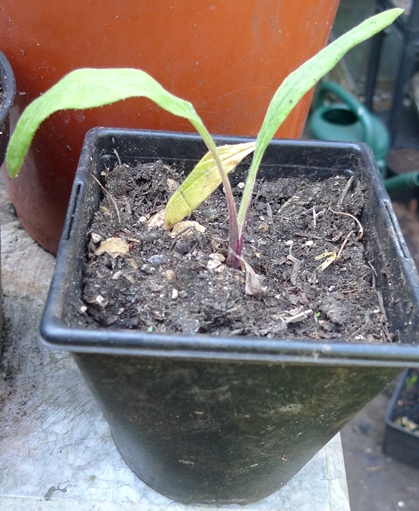
With fewer smaller pots and fewer seedlings, watering should be easier. I have lots of pots with self seeders and am trying to make better use of them. This one has forget-me-not, a wood avens and I discovered nepeta in the middle.

as I removed the wood avens and obviously disturbed the nepeta, releasing the smell, Jeffrey was attracted

I'm working on planting out anything I can and these two pelargoniums (out of the skip at the garden centre) were still in their original pots and needed to be planted. Glad I did, they are now blooming.

this iris was also a garden centre special (out of the skip)
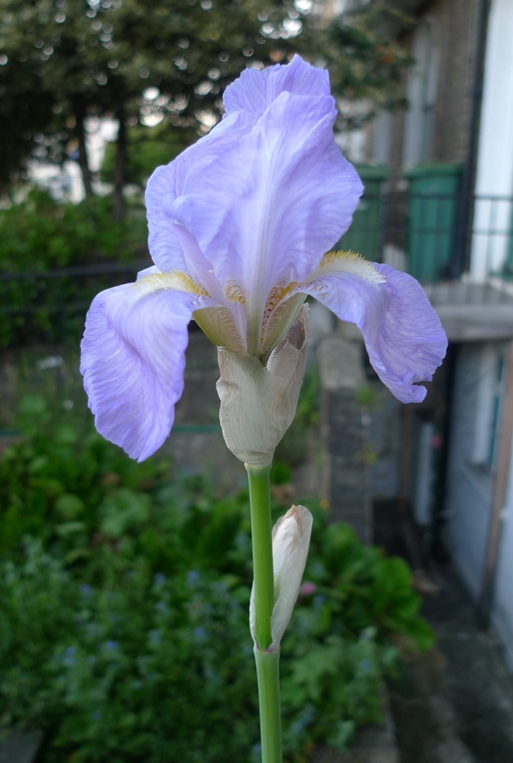
I planted some alliums last fall and wanted to share them with my daughter-in-law but sadly, with lockdown, I can't.
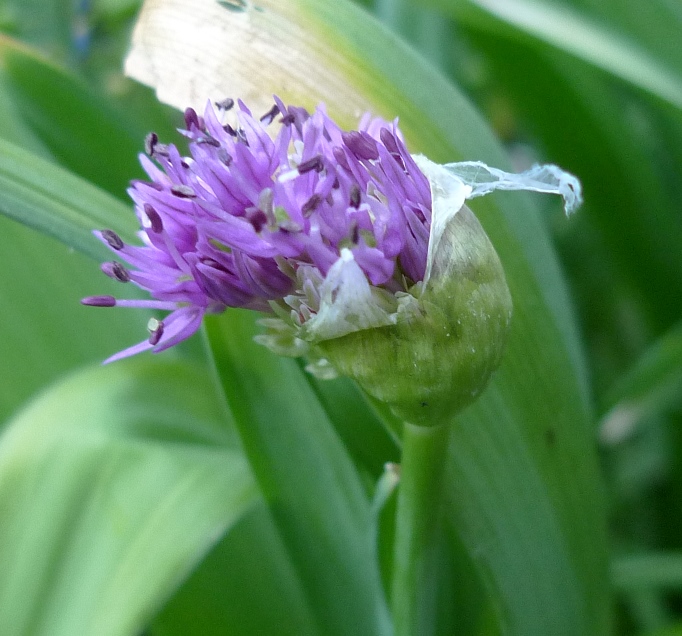
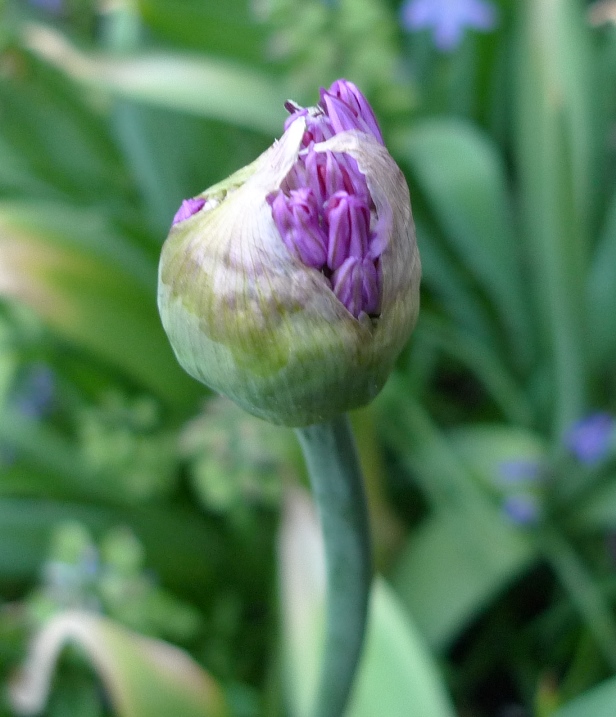
in reviewing the alliums, I see one of the allium schubertii's buds has withered (right below) before it got started
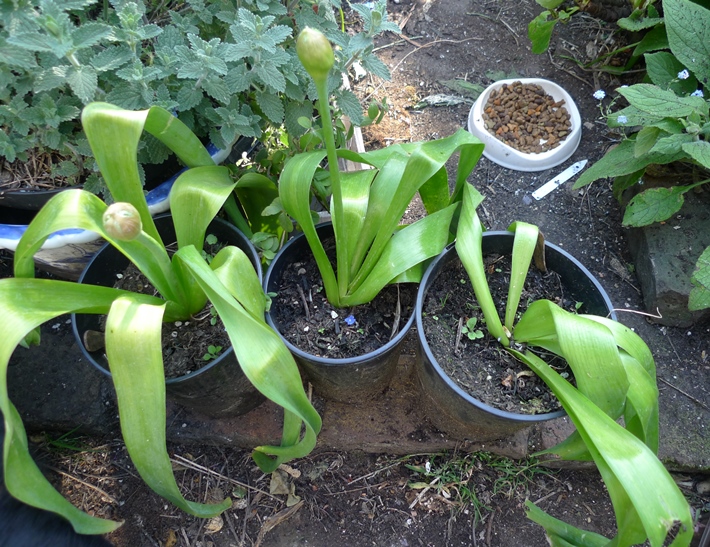
there's a close-up of it
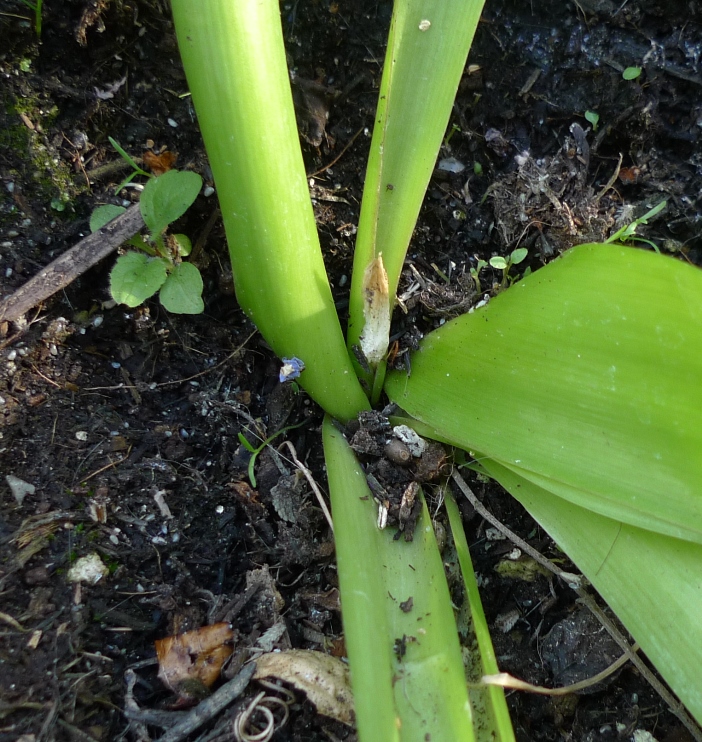
these alliums are looking good but not sure what kind of allium they are, I can't remember
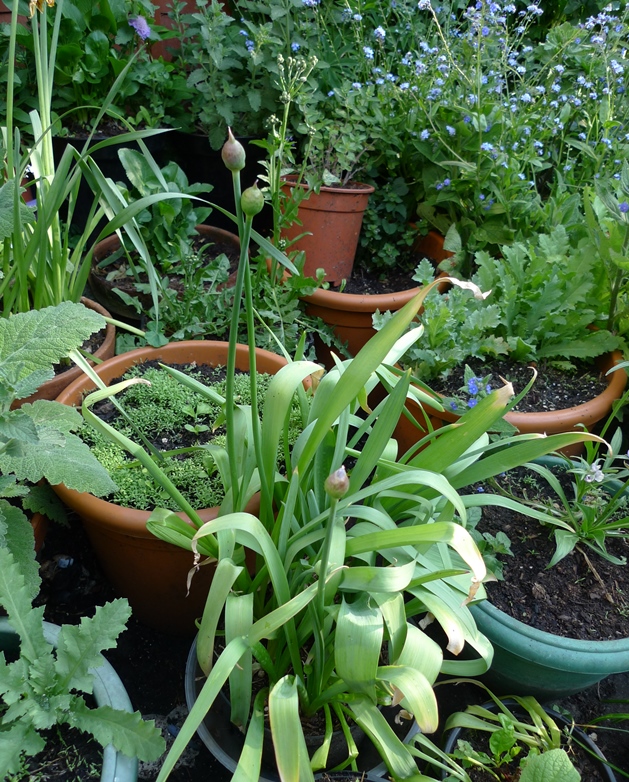
in reviewing my pots I see some that need a better use, I don't need a pot of ox-eye daisy, I have loads in the front and it's not suspectible to slug damage so that's going in the garden
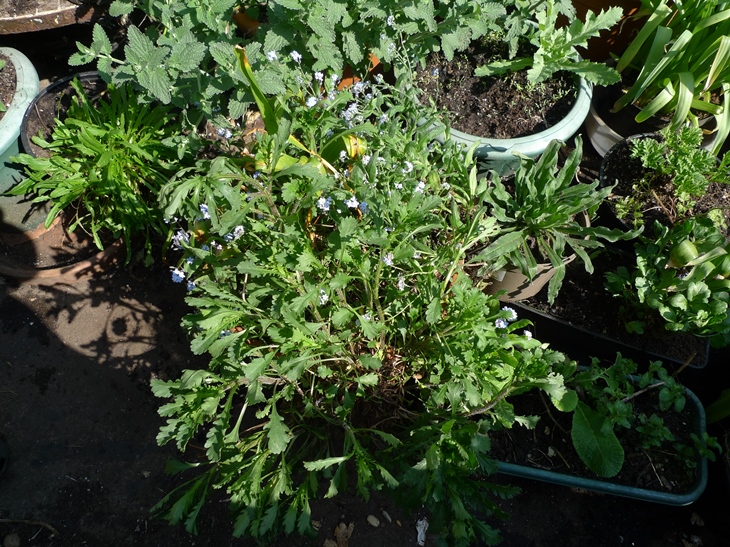
and I don't need a pot of wood avens, even if there are some other things there as well, that's going in the garden

these also went into the garden except the knautia bottom right

I love nepeta and realize I have a lot of it, 6 large pots in all and a few smaller pots
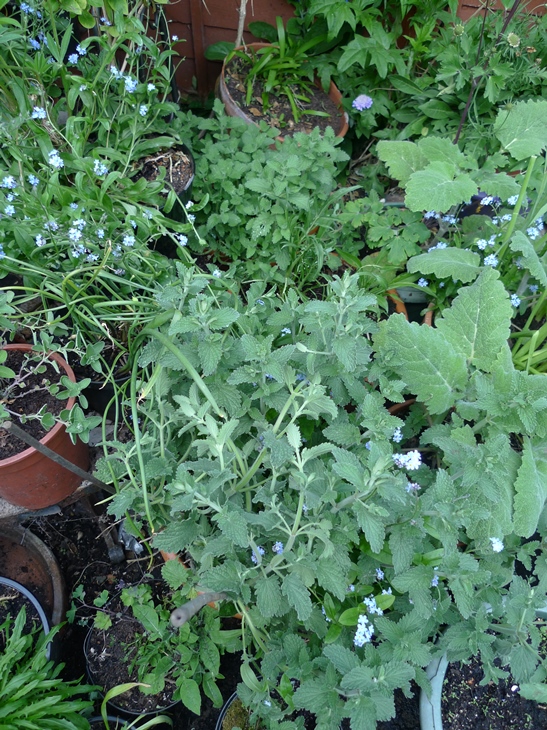
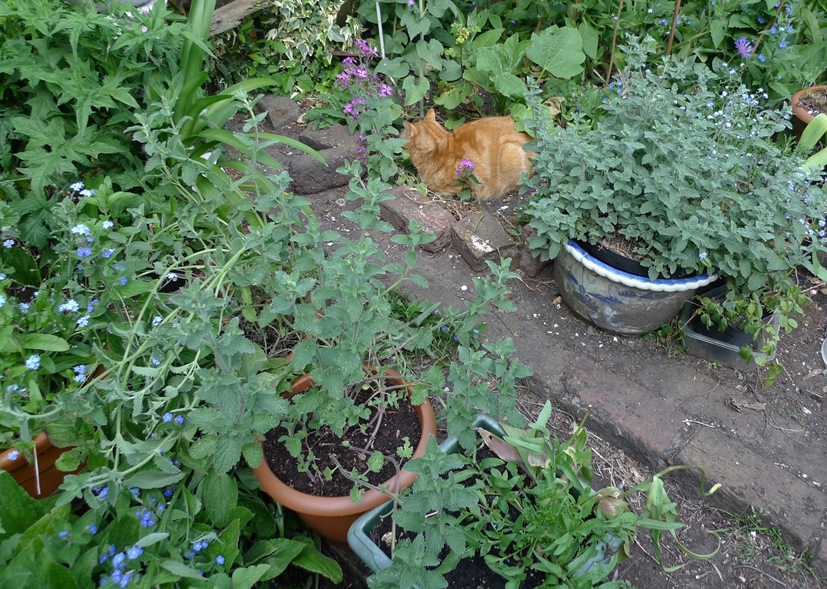
(forgot there's another pot of nepeta back left) I also love scabious and had one languishing in a small-ish pot - why not appreciating it? so planted it in that large pot with one of the echium vulgare which I love ("wildflower" from the garden centre, seed sowings of echium vulgare have yielded very little in the past), when those forget-me-nots to the right have finished (I've seen bees on them) that pot will get something new

here are some of the pots, scabious top left - bit crowded, should probably repot, middle top sea holly (and one below it) - from the garden centre last year and the slugs and snails haven't attacked it this spring so so happy about that - but where are any others in the garden, sure I had more, nepeta top right, those big fuzzy leaves on the left are salvia sclarea var turkestanica, poppy seedlings (must thin them out!) bottom and poppy small plants on the right

I've got 2 pots of lupins but no sign of a flower spike, must feed them, they've been in the same pots for a while
